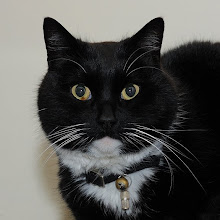Knowing that the history of the Grenadier Guards is well-paved and that many historians more knowledgeable than the author have shed their light on this subject, it is with great humbleness and care that the author starts this article. However, it seems to the author that there are some parts in the early history that are unclear to him that may need to be recorded for the purpose of discussion and further clarification.
On 16 March 1665 the 1st Regiment of Foot Guards (or the King's Regiment of Foot Guards as it was called then) was formed by the union of two existing regiments of foot guards, both designated as the King's Royal Regiment of Guards.
The first of these was the regiment of guards commanded by John Russell, and was raised 23 November 1660 in London as regiment of guards for the protection of Charles II. It consisted of twelve companies, with 100 men each.
The other regiment was a regiment of guards at Dunkirk commanded by Thomas Wentworth, 5th Lord Wentworth. The origin of this regiment is not very clear. Many sources state that this regiment was formed in 1656 as a bodyguard for Charles II in exile in the Spanish Netherlands. However, in an article on the Royalist and Cromwellian Armies in Flanders 1657 - 1662 by Firth (1903), this should be nuanced a little. The large history of the regiment by Frederick William Hamilton is not very clear on this very early period of the regiment.
According to this source Charles II started to form an army in 1656 after he had signed a treaty with Spain in the latter's war with France. Royalist forces would side with Spain, and Cromwellian forces with France. One of the regiments that started to formed in 1656 was a regiment called the King's Own Regiment and was commanded by Henry Wilmot, 1st Earl of Rochester. It was to be composed of English only (other regiments were composed exclusively of Scots and Irish). Furthermore, in late 1657 a regiment of guards started to form, to be roled as a bodyguard similar to that of the body of horse guards already in existence. This foot guard was to be given to Thomas Wentworth.
Recruiting for both English regiments did go slowly. Also, the earl of Rochester fell ill, and would die in early 1658. Probably it was by late 1657 that the two English regiments in being were merged into a single regiments of guards commanded by said Wentworth. Other sources say that Wentworth succeeded to the command of Rochester's regiment in 1658.
After the restoration with regiment was retained in Dunkirk, and on 26 August 1660 it was formally placed on the establishment of Dunkirk when Wentworth received his commission as colonel of the King's Regiment of Guards at Dunkirk. This may mark the official entry of the regiment as part of the (new) British Army. In November 1662 the regiment returned to England (when Dunkirk was sold to France), and on 17 November 1662 it was mustered as part of the English Establishment. The strength of the regiment was also twelve companies with 100 men each.
A little more than two years later both regiments were merged into a large regiment of 24 companies, with John Russell assuming command of the regiment.
Subscribe to:
Post Comments (Atom)




No comments:
Post a Comment